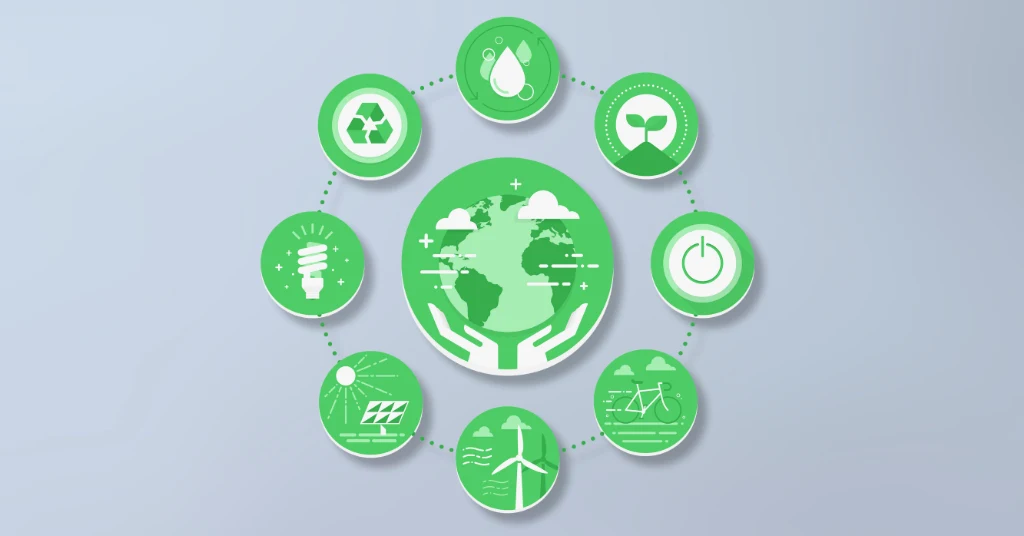Durante décadas, el estado financiero de una empresa fue la...



As global climate policies intensify, the imperatives for corporate responsibility are undergoing a fundamental transformation. Indian businesses, especially those in carbon-intensive sectors, face a new and significant challenge with the European Union’s Carbon Border Adjustment Mechanism (CBAM) and the prospect of domestic carbon pricing. These policies are rapidly transforming international trade and domestic production, making carbon emissions a critical financial liability.
The transition from a low-carbon regulatory environment to one where carbon has a financial cost is forcing Indian companies to rethink their operations, supply chains, and reporting strategies. Understanding these new rules is no longer optional; it is a necessity for maintaining competitiveness in global markets.
Through this blog, we’ll explore and gain a clearer picture of:
Carbon accounting, also known as greenhouse gas (GHG) accounting, is the process of measuring and reporting the amount of carbon dioxide (CO₂) and other greenhouse gases a company emits directly or indirectly. It provides a structured method for quantifying emissions across operations, supply chains, and product lifecycles.
Unlike financial accounting, which deals with monetary values, carbon accounting deals with emissions, which is expressed in carbon dioxide equivalents (CO₂eq). These measurements are then categorized under Scope 1, Scope 2, and Scope 3 emissions, following globally recognized standards like the GHG Protocol or ISO 14064.
The goal is not just to report solely for compliance, but to identify where emissions are coming from, understand their drivers, and make informed decisions to reduce them. Whether a company is preparing to meet regulatory requirements, set net-zero targets, or gain investor trust, carbon accounting is the first step.
In practice, carbon accounting involves the following steps:
A carbon tax is a levy placed on carbon emissions produced within a country’s borders. It’s a domestic policy tool designed to incentivize businesses to reduce their emissions by making carbon pollution more expensive. While India does not have a formal carbon tax, it has implemented an implicit carbon price through a coal cess and other energy taxes. The India’s Carbon Credit Trading Scheme (CCTS), adopted in July 2024, establishes a domestic carbon market for obligated entities, signaling a clear move towards a structured carbon pricing regime. The CCTS is a foundational policy that will shape how Indian companies manage their emissions at home.
This is a border tax imposed by the EU on imports from countries with less stringent climate policies. The goal is to prevent “carbon leakage,” where EU companies relocate production to avoid carbon costs. For Indian exporters, CBAM means that goods shipped to the EU will be subject to a carbon levy that mirrors the carbon price paid by EU producers.
The CBAM entered its transitional phase in October 2023, requiring Indian exporters in specific sectors to report on embedded emissions without financial payments. Full implementation with financial implication begins on January 1, 2026, when exporters must purchase CBAM certificates to cover their emissions.
Indian exporters, especially in carbon-intensive industries, are already feeling the effects of CBAM. As the transitional phase ends, they face new costs and compliance rules that will change how they do business and compete globally.
The CBAM initially applies to carbon-intensive goods, including iron and steel, aluminum, cement, fertilizers, hydrogen, and electricity. India’s iron and steel and aluminum sectors are among the most vulnerable, as they rely heavily on coal-fired electricity and older, carbon-intensive production methods.
According to various studies, Indian exporters could face a significant increase in costs, with some estimates suggesting a potential 25% additional cost for certain products. This will directly impact profitability and competitiveness in a crucial export market.
Non-compliance could lead to severe penalties, customs delays, and even the loss of access to the EU market. EU importers are already prioritizing suppliers who are CBAM-ready to de-risk their own supply chains.
For Indian businesses, the challenge is twofold: they must prepare for the external pressure of CBAM while also navigating the evolving domestic regulatory landscape of India’s Carbon Credit Trading Scheme (CCTS).
CBAM focuses on the carbon price paid in the country of origin, while India’s CCTS is an intensity-based domestic market. Companies that pay for carbon credits in the Indian market may be able to deduct these costs from their CBAM obligations subject to meeting certain requirements, making a clear link between the two. However, the systems are not perfectly aligned, creating reporting complexities.
Preparing for CBAM is a strategic imperative that directly affects a business’s long-term viability. A proactive approach is the only way to avoid market disruption and turn new regulations into a competitive advantage.
For exporters in affected sectors, preparation is a matter of business survival. Accurate reporting is the minimum requirement to maintain access to the EU market and retain key customers.
By accurately measuring and reducing emissions, companies can lower their CBAM financial obligations. Early action allows for strategic investments in cleaner technology and more efficient processes, turning a potential liability into a cost-saving opportunity.
Companies that lead on carbon management will be positioned as preferred suppliers, not just for the EU, but for other markets that are developing similar mechanisms (e.g., the UK, Canada). This demonstrates a commitment to global standards and can unlock new business opportunities.
Preparation for CBAM will naturally help Indian companies align with the requirements of the domestic CCTS and India’s broader decarbonization goals. A single, focused effort to measure and reduce emissions can address both international and domestic regulatory pressures at the same time.
Given the dual challenge of CBAM and India’s evolving domestic carbon market, Indian businesses need a clear, actionable roadmap to prepare effectively. Moving beyond manual processes requires a strategic, technology-driven approach. The following three-step plan provides a foundation for readiness, ensuring you can meet both international and domestic requirements.
Begin by conducting a comprehensive assessment of your Scope 1 (direct) and Scope 2 (indirect from electricity) emissions. l. The goal is to move from national or company-wide averages to product-specific, auditable data. This is essential for both CBAM and CCTS compliance. For CBAM, this granular data is what the EU requires for reporting and will be necessary for financial liability starting from 2026. For the CCTS, this same data will be the foundation for demonstrating compliance with India’s emissions intensity targets and for generating or purchasing carbon credits as needed.
Systematically engage with your upstream suppliers to collect data on the embedded emissions of the materials they provide. CBAM requires you to account for the emissions of precursors used in your final products. Creating a standardized questionnaire for your suppliers and offering them tools to measure their emissions is essential. This not only secures the data you need but also helps them become CBAM-ready themselves, reducing your risk. This step is also crucial for your broader BRSR and ESG reporting, which increasingly requires Scope 3 (value chain) data.
Invest in technology to automate data collection, calculation, and reporting. Manual reporting is highly prone to errors, which can lead to significant penalties. A purpose-built software solution can integrate with your existing systems, handle the complex attribution of emissions to specific products and shipments, and generate the audit-ready reports required by the EU. This is the most efficient way to ensure accuracy and compliance, and it also provides the robust data foundation needed for both your CBAM declarations and your CCTS submissions.
While there are strategic advantages, the path to CBAM compliance is filled with specific and complex hurdles. For many Indian businesses, particularly MSMEs, these challenges demand a fundamental shift in how they monitor, report, and manage data..
CBAM requires highly granular, shipment-by-shipment data on direct (Scope 1) and indirect (Scope 2) emissions. Many Indian companies, particularly MSMEs, lack the digital infrastructure to track emissions at this level of detail.
To accurately measure the carbon footprint of their products, companies need to gather data from their suppliers. This requires significant coordination and can be a major hurdle if suppliers lack reporting capabilities.
CBAM-embedded emissions data must be independently verified by an EU-accredited third party. The limited availability of such verifiers in India can create bottlenecks and increase compliance costs.
The regulatory landscape is still evolving, both in the EU and India. This makes it difficult for companies to make long-term investment decisions with confidence.
Navigating these challenges requires a robust, purpose-built solution. SAMESG® is engineered to empower Indian businesses to prepare for CBAM with confidence and precision. Our platform provides a strategic solution designed to address the unique complexities of this new regulatory environment:
SAMESG® provides advanced tools for calculating and tracking Scope 1, 2, and 3 emissions, giving you the granular, audit-ready data needed for CBAM reporting. Our platform simplifies the complex process of attributing emissions to specific products and shipments.
Our comprehensive value chain assessment capabilities enable you to seamlessly collect emissions data from your suppliers, a crucial step for accurately calculating product-level carbon footprints and managing Scope 3 data.
Our advanced technology automates the extraction of emissions data from various sources, reducing manual effort and ensuring data accuracy.
CBAM and India’s emerging carbon market are a new reality for Indian businesses. While they present significant challenges, they also serve as a powerful catalyst for modernization and innovation.
By moving beyond manual processes and adopting a strategic, technology-driven approach, companies can not only ensure compliance but also transform this regulatory shift into a powerful engine for competitive advantage, operational efficiency, and long-term sustainability.
Want to know how SAMESG® works?
SAMESG® streamlines ESG reporting—automating data collection, ensuring compliance, and delivering audit-ready reports in one powerful platform.
About the author

Director – Projects & Value Chain at SAM Corporate LLC
Follow the expert:
Rajagopal Kannan is the Director of Projects & Value Chain at SAM Corporate LLC, leading ESG, risk management, and sustainability initiatives. With over 20 years of experience, including a decade in banking and financial risk, he specializes in credit structuring, Basel II & III, ISO 31000, COSO ERM, internal audit, and regulatory compliance under CBUAE, DFSA, ADGM, and SCA.
His current focus lies in ESG integration, climate and sustainability risk management, and value chain sustainability. A GRI-certified Sustainability Professional and GARP-certified SCR holder, he also holds multiple global credentials including PRM®, GRCP, GRCA, CRCMP, CBiiiPro, CSM, and CISI Level 3.
Share
Related Posts
Explore more resources



is at
Meet us at SFF 2025
Booth: 4G40, Hall 4